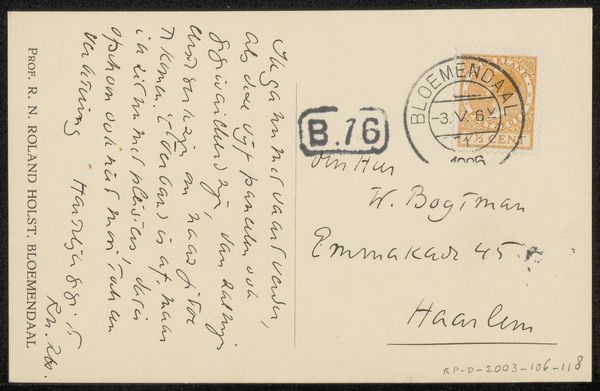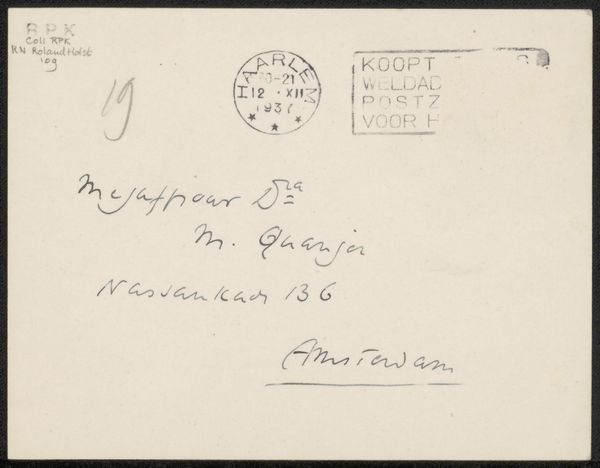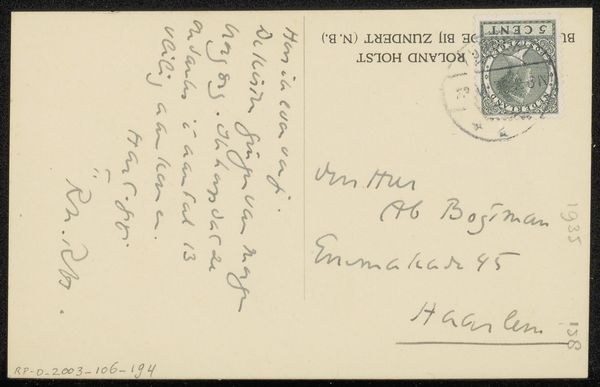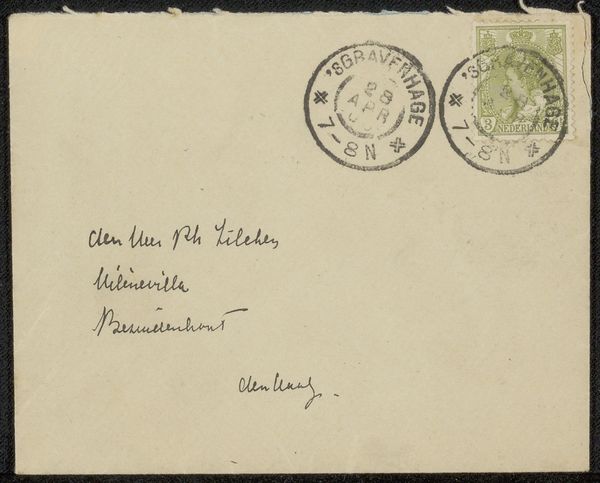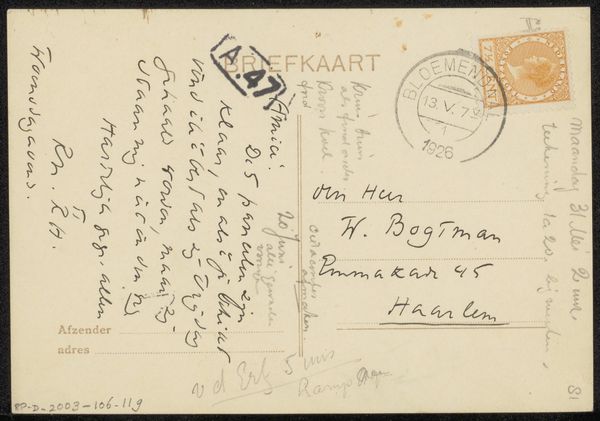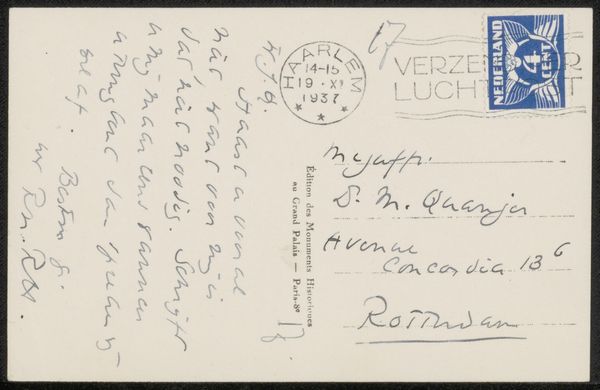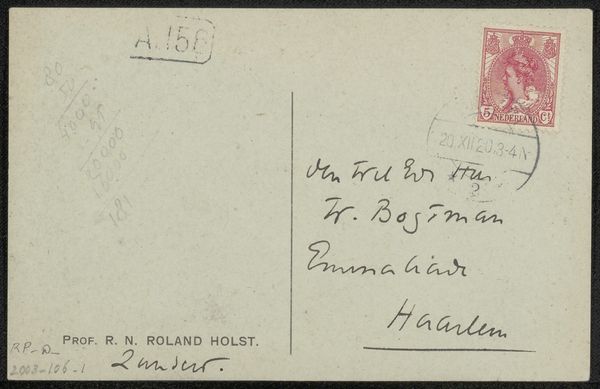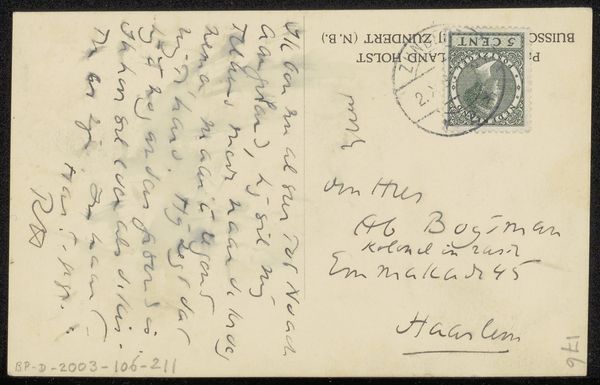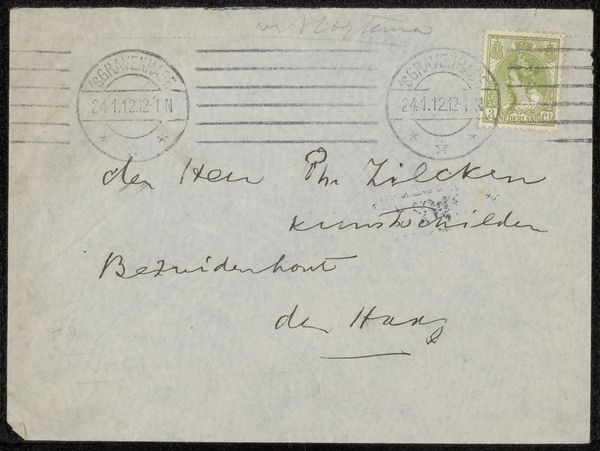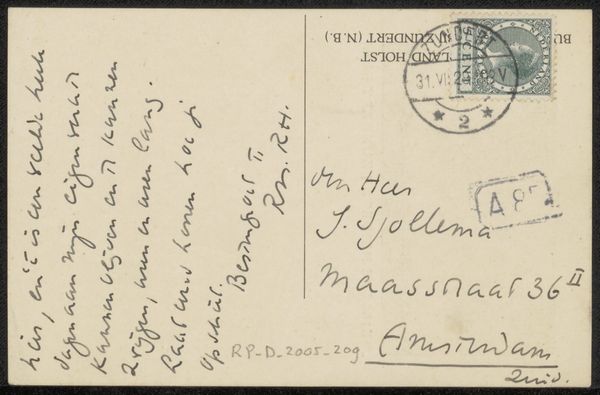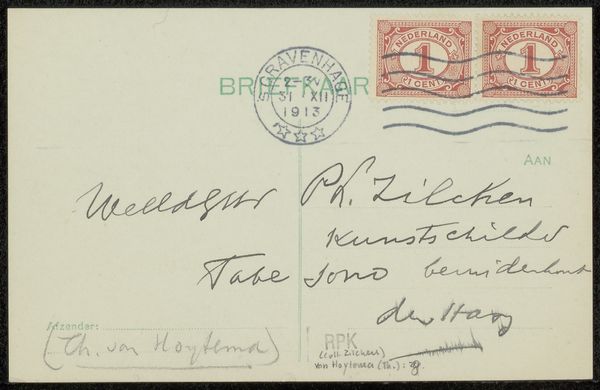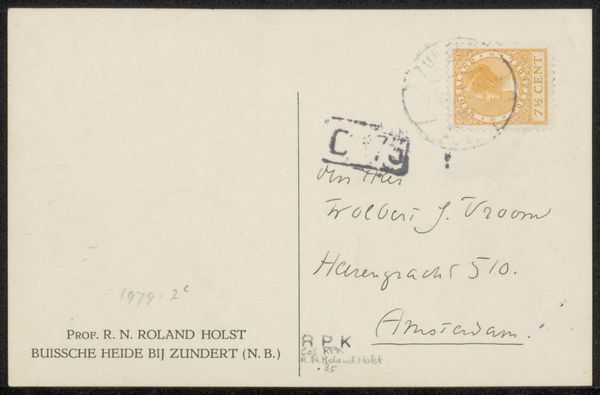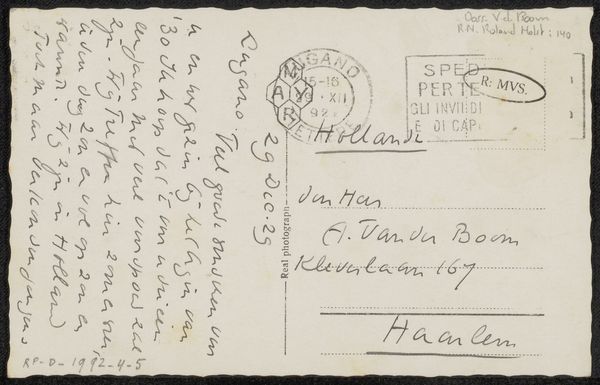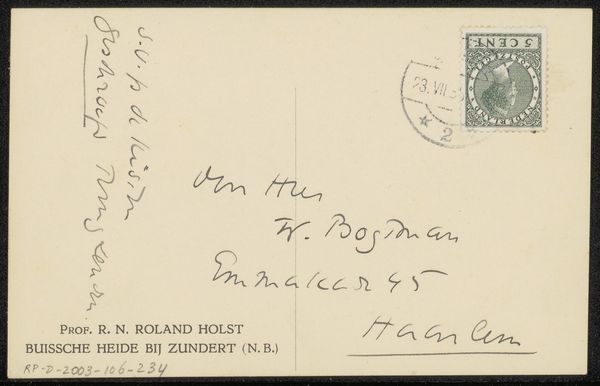
drawing, paper, pen
#
drawing
#
pen sketch
#
paper
#
pen
Copyright: Rijks Museum: Open Domain
Curator: We’re looking at “Briefkaart aan Willem Bogtman” a pen drawing on paper by Richard Nicolaüs Roland Holst. While undated, the postmark suggests it was sent around 1935. What catches your eye? Editor: There’s a certain melancholy to it, isn't there? Like glimpsing a forgotten correspondence across time. The handwriting itself, elegant but rushed, hints at a story, a connection between these two individuals in a specific social context. Curator: Indeed. Holst, known for his socialist leanings and his work within the Dutch Arts and Crafts movement, occupied an interesting space in Dutch cultural history. Considering this, does the content of this message inform or expand your view? Editor: Absolutely. Without knowing the contents of this postcard, it functions simply as an artifact. But what could this brief note between them reveal about artistic collaborations or resistance efforts, maybe some undercurrents within artistic circles amidst the rising tensions of the 1930s? The hurried style suggests perhaps that discretion was called for... Curator: That is certainly compelling to consider. Holst did indeed cultivate connections within leftist circles. There were the workshops he operated based on socialist ideas. Given the period, its understandable to perceive anxiety as a primary facet of that connection. Editor: It makes one wonder, who was Willem Bogtman? The drawing, as a surviving record, pulls us into these questions. Perhaps, the relative obscurity of a character in the history like Bogtman is just the right narrative to unravel the role of everyday communication in shaping political opinion. Curator: I concur entirely. The immediacy and the intimate nature of this postcard brings us much closer to both men in a social and historic context than monumental artwork ever could. It serves as a portal into their world, far away and yet intimately close. Editor: Exactly. It prompts us to think about how seemingly mundane objects can hold significant historical and cultural value, enriching our understanding of intersectional, often silenced stories. A brief window into history is always a valuable glimpse.
Comments
No comments
Be the first to comment and join the conversation on the ultimate creative platform.
